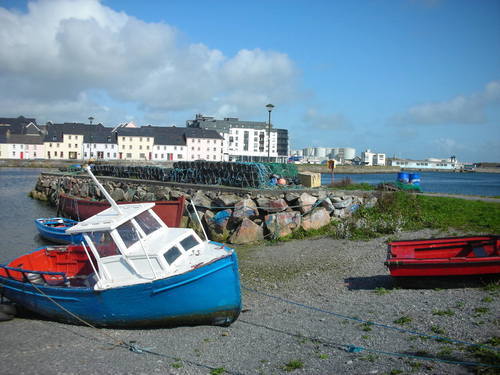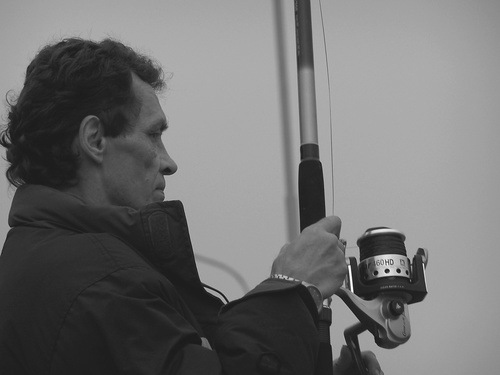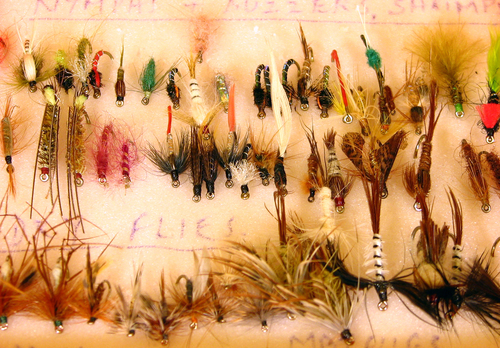Essential Navigation Equipment for Modern Boating
Navigating the waters, whether coastal cruising, offshore passage-making, or simply enjoying a day out on the lake, requires a blend of skill, knowledge, and the right equipment. Modern technology has undeniably revolutionized how we find our way, offering incredible precision and ease. Yet, the timeless principles of seamanship and the reliability of traditional tools remain just as crucial. In my years spent on everything from small fishing dinghies to larger sailing vessels, I’ve learned that confidence on the water stems from being well-prepared. This means understanding and utilising a core suite of navigation equipment, ensuring not just efficiency, but paramount safety for yourself, your crew, and your vessel.
The electronic heartbeat: Core digital navigation systems
At the heart of most modern navigation setups lies the Global Positioning System (GPS), or more broadly, the Global Navigation Satellite System (GNSS), which includes constellations like GLONASS, Galileo, and BeiDou alongside GPS. These systems provide remarkably accurate, real-time positioning virtually anywhere on the globe. This capability, often delivered through a dedicated chart plotter, has fundamentally changed navigation, automating the once laborious task of position fixing. Chart plotters, like the Germin units often found on charter boats, integrate GPS data with electronic nautical charts (ENCs), displaying your vessel’s position, course, and speed directly on a detailed map. This visual representation is invaluable for route planning, monitoring progress, and identifying potential hazards like shoals, wrecks, and navigation aids. While incredibly powerful, it’s crucial to remember that electronic charts need regular updates to reflect changes in buoyage, depths, and regulations.
Radar (Radio Detection and Ranging) is another cornerstone of modern electronic navigation, particularly vital in low visibility conditions like fog, heavy rain, or darkness. By emitting radio waves and detecting their reflections, radar paints a picture of surroundings, showing coastlines, other vessels, buoys, and even weather formations. It’s an indispensable tool for collision avoidance, allowing you to ‘see’ targets that might be invisible to the naked eye. Modern radar systems often overlay their data onto the chart plotter display, providing an integrated view of charted information and real-time contacts. Complementing radar for collision avoidance, especially in busy waters, is the Automatic Identification System (AIS). AIS transponders broadcast a vessel’s identity, position, course, and speed to other AIS-equipped vessels and shore stations. Receiving this data significantly enhances situational awareness, helping you identify and track nearby commercial traffic and larger recreational boats long before they become a visual or radar contact. As highlighted in resources focusing on modern seamanship techniques, understanding and utilizing AIS is increasingly important for safe navigation.
Beyond the screen: Essential sensors and communication
While knowing your position is fundamental, understanding your immediate environment is equally critical. An echosounder, or depth sounder (often referred to as sonar in a broader sense), measures the depth of water beneath your keel using sound pulses. This is absolutely essential for avoiding grounding, especially in unfamiliar or shallow waters, and for anchoring safely. Coupled with the log, which measures the boat’s speed through the water, you gain vital data for dead reckoning calculations – a useful backup skill even today. For sailors, wind instruments measuring wind speed and direction are crucial for sail trim and performance optimisation. Even for powerboaters, knowing the wind conditions aids in docking and understanding potential weather shifts.
Reliable communication is non-negotiable for safety at sea. The VHF (Very High Frequency) radio remains the primary tool for short-range maritime communication. It’s used for contacting other vessels, marinas, bridge operators, and, most importantly, for distress calls (Mayday) and receiving urgent safety information broadcast by coast guards. Having both a fixed-mount VHF at the helm and a handheld unit as a backup is a wise precaution. For longer journeys or enhanced convenience, an autopilot can significantly reduce fatigue by steering the boat automatically to a set compass course or GPS waypoint. While not strictly essential for navigation itself, it frees up the skipper to focus more on watchkeeping, weather, and other navigational tasks, contributing indirectly to safety and efficiency.
The unfailing compass and timeless charts: Traditional tools remain vital
Despite the sophistication of electronics, the magnetic compass remains arguably the single most important navigational instrument on any boat. It requires no power, is generally unaffected by system failures that might plague electronics, and provides a constant, reliable indication of magnetic heading. Every skipper should know how to use their compass and be aware of its deviation (errors caused by the boat’s own magnetic fields). In my experience, boxing the compass and taking bearings is a fundamental skill that should never be neglected. Alongside the compass, traditional paper charts are indispensable. They provide the ‘big picture’ view that can sometimes be lost on a zoomed-in plotter screen and serve as the ultimate backup should all electronics fail. Keeping relevant, up-to-date paper charts for your cruising area is a cornerstone of prudent seamanship, a fact underscored even by suppliers focusing on essentials for boat owners.
Working effectively with paper charts requires a few key tools. Parallel rulers are used to transfer course lines and bearings across the chart accurately, while dividers measure distances directly from the chart’s scale. These simple, robust nautical navigation tools are essential for traditional plotting techniques. Furthermore, paper charts must be kept current. Official Notices to Mariners provide updates on changes like new hazards or relocated buoys. Correcting charts used to be a meticulous process involving pen and ink, and specialised tools like chart correction templates using standardised symbols (often detailed in publications like Admiralty Chart 5011) were essential for ensuring accuracy. While less common for recreational boaters relying heavily on ENCs, understanding the principle of chart correction reinforces the importance of using up-to-date information, regardless of format. For those venturing further offshore, learning celestial navigation using a sextant offers the ultimate self-reliance, connecting modern boaters with centuries of maritime heritage, often showcased in places like the Australian National Maritime Museum shop.
Situational awareness: Weather, visibility, and collision avoidance
Safe navigation isn’t just about knowing where you are and where you’re going; it’s also about understanding the conditions around you. Weather plays a huge role. A barometer helps indicate changes in atmospheric pressure, often forewarning approaching fronts or squalls. Accessing reliable marine weather forecasts via VHF, satellite communication, or internet connection (where available) is critical for passage planning. Understanding basic maritime meteorology allows you to interpret forecasts and observe developing conditions effectively.
Ensuring your vessel is visible to others, and that you can see them, is fundamental to collision avoidance. Navigation lights are required by law (COLREGs – International Regulations for Preventing Collisions at Sea) between sunset and sunrise and in restricted visibility. Knowing the correct lights to display for your vessel type and situation (underway, anchored, fishing, etc.) is crucial. Equally important is ensuring these lights are functioning correctly. Systems designed to monitor navigation lights, such as the electronic position light monitoring system from TOPLICHT, provide peace of mind by alerting the skipper immediately if a bulb or LED fails or if there’s a wiring issue. This proactive monitoring significantly enhances safety during night-time operation or in poor visibility. Of course, maintaining a proper lookout by sight and hearing remains a constant requirement under the COLREGs, regardless of the equipment carried.
Keeping your gear shipshape: Maintenance and selection
Even the best navigation equipment is useless if it’s not working correctly. Regular maintenance is essential. This includes keeping screens and antenna connections clean, checking wiring for chafe or corrosion, ensuring software is updated (especially for chart plotters and associated charts), and periodically calibrating instruments like the compass, log, and depth sounder. For instance, radar performance depends on a clean scanner and proper tuning, while GPS accuracy relies on an unobstructed antenna. Following manufacturer guidelines for maintenance ensures reliability when you need it most. You can often find a wide range of navigation equipment for ships and maintenance supplies through marine wholesalers, but understanding your specific needs is key.
Choosing the right equipment depends heavily on your boat type and intended use. A coastal cruiser has different needs than an offshore racer or a small lake boat. Key factors include compliance with regulations (SOLAS requirements apply to larger commercial vessels but inform best practices), integration capabilities (ensuring different instruments can ‘talk’ to each other via protocols like NMEA 2000), reliability, and redundancy. Having backup systems is crucial – consider a handheld GPS, paper charts, and perhaps even navigation apps on a tablet with an external power source as fallbacks. User-friendliness and adequate training for the crew are also important considerations. Finally, budget and long-term costs, including installation and potential upgrades, play a role in the selection process.
Navigating with confidence: Weaving together skill and technology
Ultimately, navigation equipment, no matter how advanced, is only a tool. True navigational competence comes from combining these tools with knowledge, practice, and sound judgment. The role of the navigator, especially in demanding situations like offshore racing, has evolved from pure position-fixing to interpreting vast amounts of data for strategic decision-making. This involves understanding weather patterns, boat performance (using tools like polardiagrams), and applying the COLREGs diligently. Investing time in learning – whether through courses, books, or practical experience – is just as important as investing in hardware. Knowing how to interpret the data your instruments provide, recognizing potential errors, and having the foundational skills to navigate when technology fails are what truly builds confidence and ensures safety on the water. In my view, modern navigation is a fascinating blend of science and seamanship, where technology empowers us, but fundamental skills anchor our safety.




